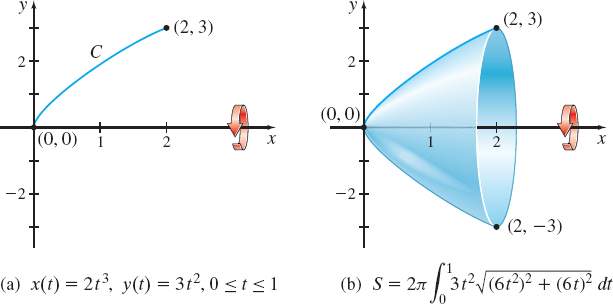EXAMPLE 1Finding the Surface Area of a Solid of Revolution Obtained from Parametric Equations
Find the surface area of the solid generated by revolving the smooth curve C represented by the parametric equations x(t)=2t3, y(t)=3t2, 0≤t≤1, about the x-axis.
Solution We begin by graphing the smooth curve C and revolving it about the x-axis. See Figure 22.
We use formula (2) with dxdt=ddt(2t3)=6t2 and dydt=ddt(3t2)=6t. Then S=2π∫bay(t)√(dxdt)2+(dydt)2dt=2π∫103t2√(6t2)2+(6t)2dt=2π∫103t2√36t4+36t2dt=36π∫10t3√t2+1dt=36π2∫21(u−1)√udu↑u=t2+1;du=2tdtwhen t=0,u=1; when t=1,u=2=18π[25u5/2−23u3/2]21=24π5(√2+1)
The surface area of the solid of revolution is 24π5(√2+1)≈36.405 square units.
